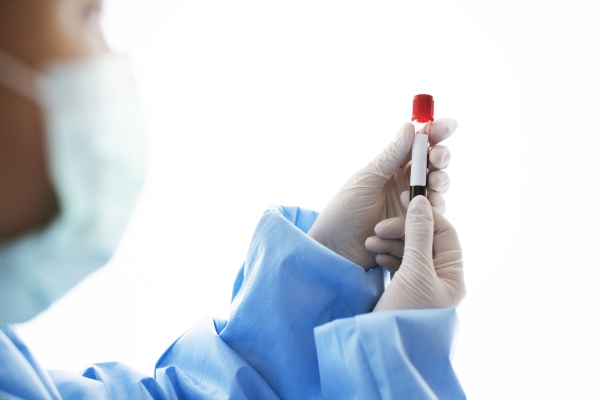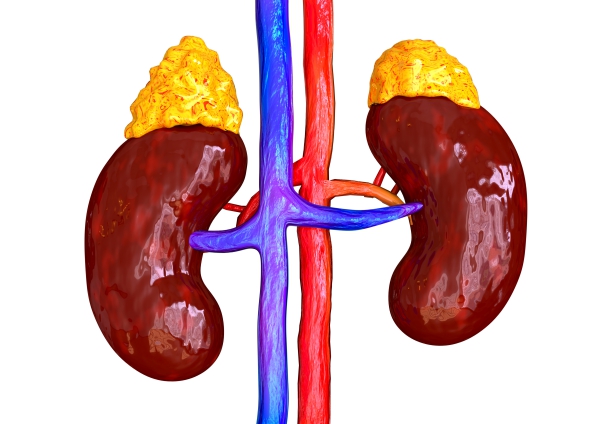What is Cushing syndrome?
Cushing syndrome occurs when your body is exposed to high levels of cortisol for an extended period of time. The excess cortisol can be produced by your body itself or obtained from medications. This condition can also be called hypercortisolism.
Some characteristics of Cushing syndrome are moon facies, buffalo hump and stretch marks on your skin. Cushing syndrome, due to an adrenal or pituitary tumour, is 5 times more common in females than males. It usually occurs in people aged between 25-40 years. The treatment goal is to bring your level of cortisol back to normal, hence relieving your symptoms. Your chance of recovery increases if you start treatment early.
What are the causes of Cushing syndrome?
Cortisol is a hormone produced by the adrenal glands- a gland that sits on top of your kidneys. Cortisol has many functions, for example it:
- Regulates your blood pressure.
- Acts as an anti-inflammatory agent.
- Increases your blood sugar level by balancing the effects of insulin.
- Suppresses your immune system.
- Mediates your stress response.
- Regulates the metabolism of protein, carbohydrates and fats into energy.
In Cushing syndrome, the excess cortisol may come from 2 main sources, namely, endogenous and exogenous sources.
Exogenous Cushing syndrome

Exogenous Cushing syndrome is due to an external source of excess cortisol. Exogenous sources of cortisol include:
- Oral corticosteroids: these medications are used to treat diseases such as rheumatoid arthritis, lupus, asthma and for the prevention of organ transplant rejection. These are chronic diseases which require you to be on high doses of corticosteroids for long periods of time. Unfortunately, this predisposes you to develop Cushing syndrome. An example of a corticosteroid is prednisolone.
- Corticosteroid injections: these injections are used to treat bursitis, joint and back pain.
- Inhaled corticosteroids: these medications are taken by asthmatic people to help improve their symptoms.
- Skin creams containing corticosteroids: these creams are mainly used to treat eczema.
Endogenous Cushing syndrome
This is when your body itself produces an excess amount of cortisol. The elevated level of cortisol may be due to excess production of cortisol by one or both adrenal glands or overproduction of the adrenocorticotropic hormone (ACTH) by the pituitary gland. The pituitary gland is a pea-sized gland located at the base of the brain which produces the hormone ACTH amongst others. ACTH then stimulates the adrenal glands to produce cortisol. Causes of excess endogenous cortisol include:
- Pituitary adenoma: this is a benign (non-cancerous) tumour of the pituitary gland which will produce an excess amount of ACTH. The excess ACTH will then stimulate the adrenal glands to produce more cortisol, even if the level of cortisol is already high. This form of Cushing syndrome is known as Cushing’s disease. It is the most common form of endogenous Cushing syndrome and is more common in women.
- ACTH-secreting tumours: these tumours are also known as ectopic tumours which develop in abnormal places in the body. These tumours produce ACTH and are usually located in the lungs, thyroid gland and pancreas. They may be benign or malignant (cancerous). The excess ACTH production result in overproduction of cortisol which leads to Cushing syndrome.
- Adrenal adenoma: this is when there is a benign tumour of the adrenal glands that causes the gland to produce excess cortisol. It does not depend on ACTH stimulation to produce cortisol. It is the most common cause of elevated cortisol level due to an adrenal disease.
- Familial Cushing syndrome: this condition is rare. This is when you inherit a predisposition to develop tumour of the endocrine glands, resulting in excess cortisol production and hence, Cushing syndrome.

What are the signs and symptoms of Cushing syndrome?
The common signs and symptoms of Cushing syndrome include:
- Moon facies: rounded appearance of the face due to fat deposition.
- Buffalo hump: fat deposition in between the shoulders.
- Increased fat deposition around the midsection and upper back.
- Pink or purple striae: stretch marks on the skin of the abdomen, breasts, thighs and arms.
- Acne.
- Thinning and fragile skin that gets bruised easily.
- Cuts or injuries take longer to heal.

Signs and symptoms in women with Cushing syndrome include:
- Irregular or absent menses.
- Hirsutism: excessive or thicker facial and body hairs.
Signs and symptoms in men with Cushing syndrome include:
- Erectile dysfunction.
- Decreased libido.
- Infertility.
Other signs and symptoms of Cushing syndrome include:
- Muscle weakness.
- Depression.
- Anxiety.
- Irritability.
- Severe fatigue.
- Emotional instability.
- High blood pressure.
- Headache.
- Darkening of the skin.
- Increased risk of fractures due to bone loss (osteoporosis).
- Impaired growth in children.

Making a diagnosis
After taking a detailed history from you, your doctor will perform a physical examination to look for signs of Cushing syndrome. If your doctor suspects Cushing syndrome, he/she may order the following tests:
- Blood and urine tests: these tests are used to measure your level of cortisol. The 24h urine cortisol level is the initial screening tool for Cushing syndrome. In addition, your doctor may perform the low dose dexamethasone suppression test to confirm the diagnosis.
- Midnight salivary cortisol: your level of cortisol varies during the day and is lowest at night. If the level of cortisol is elevated in the sample of saliva collected at midnight, it is suggestive of Cushing syndrome.
- Magnetic resonance imaging (MRI): if your doctor suspects a pituitary source of excess ACTH, an MRI scan is used to assess to pituitary gland.
- Computed tomography (CT) scan: if an adrenal pathology is suspected, an abdominal CT scan is recommended. Abdominal and chest CT scan is also used in people with suspected ectopic ACTH production.
- Petrosal sinus sampling: this test will enable your doctor to determine whether the problem is in the pituitary or elsewhere. If the level of ACTH is high in the sinus sample, then the problem is with the pituitary gland.

Treatment of Cushing syndrome
The treatment of Cushing syndrome involves medications and surgery.
Medications
As long-term use of corticosteroids may result in Cushing syndrome, your doctor may reduce the dose of the drugs or replace the drug with one not containing corticosteroids to help relieve your symptoms. In addition, it is not recommended to stop the use of corticosteroid drugs abruptly as it can lead to very low levels of cortisol. The dose of the drug should be tapered off over a period of 1 or 2 months.
The medications used in the treatment of Cushing syndrome include:
- 11-beta-hydroxylase inhibitors: osilodrostat.
- Somatostatin analogues: pasireotide.
- Adrenal steroid inhibitors: metyrapone, ketoconazole ad etomidate.
- Glucocorticoid receptor antagonist: mifepristone.
- Adrenolytic agents: mitotane.

These drugs work by either blocking the effects of cortisol on your tissues or decrease the production of ACTH by the pituitary gland. Side effects of the drugs include nausea, vomiting, high blood pressure, diarrhoea. headache, and fatigue.
Surgery
If your doctor discovers a tumour in the scans, surgery is recommended. A neurosurgeon will perform the surgery if the tumour is located in the pituitary gland and a general surgeon will perform the surgery if it is located in the adrenal glands. After surgery your level of cortisol will be down, hence your doctor will prescribe cortisol replacement medications to regulate your cortisol level. The cortisol replacement medications may be taken temporarily, if you regain normal adrenal function, or lifelong.
What are the complications of Cushing syndrome?
If Cushing syndrome is left untreated, the following complications may ensue:
- Type 2 diabetes.
- Loss of muscle mass.
- Weakness and fatigue.
- High blood pressure.
- Osteoporosis (bone loss).
- Kidney stones.
- High cholesterol levels.
- Impaired immune function.
- Recurrent fractures.
- Impaired wound healing.
- Altered mental status.
- Cardiovascular diseases.
- Visual loss.
Prognosis

Seeking medical advice early is key to prevent complications and increase your chance of recovery. The prognosis depends on the cause of the disease. People with Cushing syndrome with persistent disease after surgery have higher mortality rates than those with initial remission or Cushing syndrome due to benign adrenal tumour.

Source:
Parveen, K. and Michael, C., 2017. Kumar & Clarks Clinical Medicine. 9th ed. The Netherlands: ELSEVIER.
Nguyen, H., 2020. Endogenous Cushing Syndrome Treatment & Management.
NHS. 2020. Cushing's syndrome.



